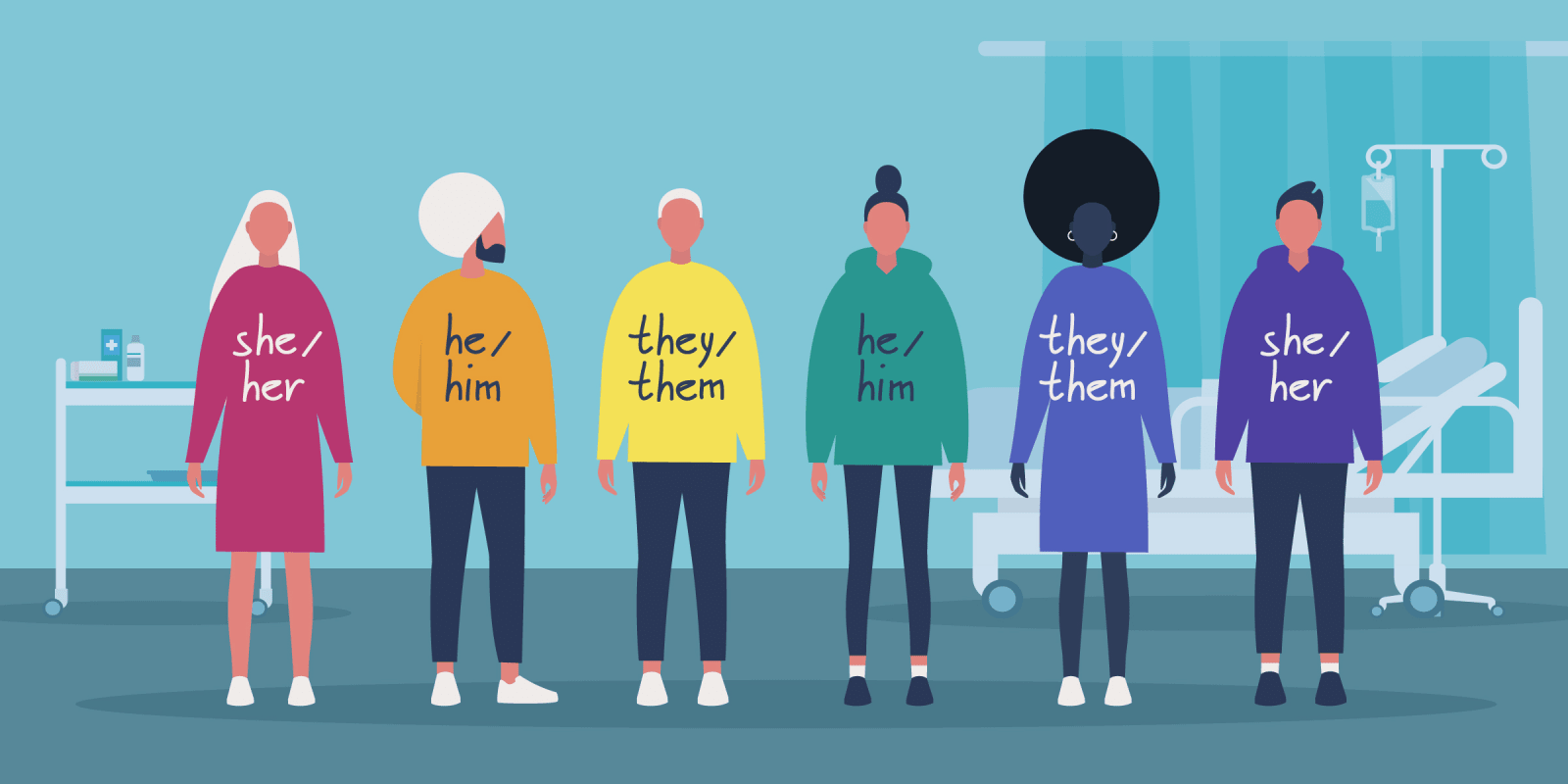Jamie came into morning rounds swaddled in a gray blanket, looking glum. Our adolescent psychiatry team — me, the attending psychiatrist, a child psychiatry fellow, and a social worker — sat around the conference table, ready to have our usual morning check-in.
“How are you today, Jamie?” I asked. Jamie was a nonbinary individual whose pronouns were they/them. They had been admitted to the hospital for suicidal ideation. Jamie had been looking better earlier in the week, but today they appeared as miserable as they had been when first admitted.
“Not that great … I got my period today. I hate when I get my period. I mean, I didn’t ask to have this body in the first place,” Jamie said, eyes downcast.
We spent our check-in that morning discussing Jamie’s feelings about their body, gender identity, and gender dysphoria. Jamie’s gender identity as nonbinary meant that they did not identify as either male or female. The National Center for Transgender Equality states that nonbinary individuals are a subset of transgender people, or people “whose gender identity is different from the gender they were thought to be at birth.” By contrast, cisgender people are people whose gender identity corresponds with their gender identity at birth. The 2015 U.S. Transgender Survey indicated that 77% of transgender children in grades K–12 reported experiencing some form of mistreatment, such as verbal, physical, or sexual assault. Among transgender adults, 30% reported experiencing serious psychological distress, compared with only 5% of the U.S. adult population overall.
For Jamie, their experiences of alienation from peers and from their physical body had crystallized into a deep depression. Jamie’s period — a monthly reminder of being born into the wrong body — always made them feel especially angry and despondent. Jamie’s depression was clearly linked to their gender dysphoria, but our staff struggled to use Jamie’s correct pronouns and habitually defaulted to she/her instead. In addition, during one staff meeting, a staff member expressed confusion about how seriously to take Jamie’s dysphoria and questioned whether it was "just a phase."
In a qualitative study conducted in 2019, researchers found that, similar to our team’s experience, health care staff often make mistakes in using transgender patients’ correct pronouns, and struggle to understand the fluidity and complexity of patients’ gender identities. Significantly, patients involved in the study expressed feeling most supported when staff provided “gender-affirming care,” which includes respecting patients regardless of gender identity, using patients’ identified pronouns, and acknowledging mistakes in pronoun use. Another qualitative study found that a top health care priority among transgender adults is for clinicians to become culturally competent in caring for transgender patients, including “being respectful to trans folks.”
Given the disturbingly high rates of depressive symptoms, self-harming behaviors, and suicide attempts in transgender adolescents, and the additional harassment they may face in school, it was imperative that our team did our utmost to respect Jamie’s gender identity, which included using their correct pronouns. To that end, our team began to remind one another during our daily morning staff meetings to use the appropriate pronouns, for Jamie and other patients. We educated ourselves on caring for transgender patients; one arts therapist shared notes from a lecture on treatment of transgender children, and I shared a study from another adolescent psychiatry unit. Rather than questioning whether Jamie was just passing through a phase — a question no one could answer — we sought to support them in their current distress and dysphoria.
Jamie eventually stabilized enough to leave the hospital and continue their psychiatric care as an outpatient, but my experience caring for them alongside a team has stayed with me. Jamie’s health and gender identity were deeply intertwined. In order for me to help them with their depression, I needed to understand their gender dysphoria too. While Jamie’s experiences are not representative of all transgender patients’ experiences, it is undeniable that transgender individuals experience disproportionate harm and adversity. It is therefore all the more essential that clinicians treat them with the greatest care and respect, educate themselves when they are unsure of best practices, and encourage one another to continually improve.
Have you treated patients that pushed you outside your comfort zone? Share your experiences in the comments below.
Ashley Wu is a fourth-year medical student at Weill Cornell Medical College. She plans to specialize in psychiatry and, in her spare time, enjoys baking sourdough, finger crocheting, and attempting various arm balance yoga poses. Ashley is a 2020–2021 Doximity Op-Med Fellow.
All names and identifying information have been modified to protect patient privacy.
Collage by Diana Connolly / Nadia Snopek / elenabsl / Shutterstock







